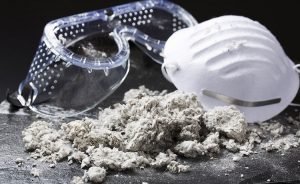
How to Tell the Difference Between Asbestos and Cellulose Insulation
Asbestos and cellulose are two types of insulation that have been widely used in buildings, but they couldn’t be more different.
Many buildings in the UK built prior to 2000 still contain asbestos-based materials. Since it’s not always possible to tell by looking (with asbestos resembling sheet concrete to the untrained eye), the only way to confirm the presence of asbestos is through a survey.
These are some of the most Frequently Asked Questions we receive about the process:
An asbestos survey is a detailed assessment of a building, property, or other structure designed to identify the presence of asbestos-containing materials (ACM). It involves examining the condition of the materials for signs of damage and deterioration, as well as taking samples of the material to determine what type of asbestos (if any) is present.
There are four main varieties of asbestos surveys: management surveys, pre-refurbishment surveys, pre-demolition surveys, and re-inspection surveys. This is what each of them means:
Asbestos was widely used in construction well into the 1970s, where it was slowly phased out prior to a complete ban in 2000. While it was being used as a standard building material, few contractors would have kept a detailed list of the properties for which it was used. This means any commercial or public sector building built prior to 2000 could potentially contain ACMs.
An asbestos survey lets you know whether or not you have ACMs in your property and, if you do, can recommend the best way to manage the material for your own safety and peace of mind. It can help determine the level of risk and what steps can be taken to remove the affected material. What’s more, it’s the only effective way to identify asbestos, since most ACMs look like concrete, cement, plaster, or drywall.
An experienced and qualified asbestos surveyor will be appointed to conduct the survey. The initial inspection will involve a walk-through of the premises as the surveyor performs an on-site risk assessment.
The next stage involves looking for suspect ACMs in a methodical and meticulous manner, inspecting every part of the building, and making sure that no area is overlooked. As the survey proceeds, the surveyor will highlight suspect areas on a plan or map of the building while also taking photographs of affected areas. Material samples are collected from suspect areas to be analysed off-site at an accredited laboratory.
Asbestos surveyors are looking for evidence of ACMs in the building, specifically noting the location and amount of materials as well as the condition they are in. Should the ACM appear damaged or deteriorated, this is of particular concern and will be recorded as such in their report, along with appropriate photographic evidence.
The cost of an asbestos survey is typically determined by the length of time it takes to conduct the survey, and this itself depends on several factors. These include the size of the property, the number of rooms in the property, the age and condition of the property, and how easy it is to access the survey area. Furthermore, if the survey is being conducted on commercial premises, the surveyor will need all staff to vacate the area being surveyed. If this is not possible during regular working hours, the survey may need to be booked outside office hours, which could incur additional costs.
As with the cost of an asbestos survey, the time taken to complete one depends on several factors. These include…
All asbestos surveys must be carried out by a suitably trained and qualified asbestos surveyor. This ensures they have the skills and experience to conduct a safe and accurate survey and produce a detailed report on the property.
From our Basildon office, we supply fully-trained and qualified asbestos surveyors to sites across the UK. Whatever type of asbestos survey you require for your property, we can provide a fast and effective solution. Contact Abastra Environmental Ltd today on 01268 411 355 for more information.

Asbestos and cellulose are two types of insulation that have been widely used in buildings, but they couldn’t be more different.

Lead paint is one of several materials that have been banned in the UK because of the danger they pose to the public…

Although banned in the UK since 2000, asbestos was a common building material well into the 1980s, meaning many properties are likely to have some
| Cookie | Duration | Description |
|---|---|---|
| cookielawinfo-checkbox-analytics | 11 months | This cookie is set by GDPR Cookie Consent plugin. The cookie is used to store the user consent for the cookies in the category "Analytics". |
| cookielawinfo-checkbox-functional | 11 months | The cookie is set by GDPR cookie consent to record the user consent for the cookies in the category "Functional". |
| cookielawinfo-checkbox-necessary | 11 months | This cookie is set by GDPR Cookie Consent plugin. The cookies is used to store the user consent for the cookies in the category "Necessary". |
| cookielawinfo-checkbox-others | 11 months | This cookie is set by GDPR Cookie Consent plugin. The cookie is used to store the user consent for the cookies in the category "Other. |
| cookielawinfo-checkbox-performance | 11 months | This cookie is set by GDPR Cookie Consent plugin. The cookie is used to store the user consent for the cookies in the category "Performance". |
| viewed_cookie_policy | 11 months | The cookie is set by the GDPR Cookie Consent plugin and is used to store whether or not user has consented to the use of cookies. It does not store any personal data. |